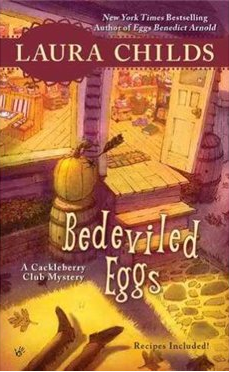
Don’t get me wrong, I love animals, and I totally appreciate when an author has knowledge of something and passes it along during the course of the plot. Lots of authors do this incredibly well. I’m pretty sure all I know about Egyptian history I learned from Amelia Peabody by way of author Elizabeth Peters. Dick Francis, and now his son Felix, make steeplechasing (of all things) absolutely fascinating. Aaron Elkin’s Gideon Oliver can tell me about knobby bits of bone for pages and pages. I am even okay with a bit of cooking, knitting and crafting. But over the last decade or so these things, along with animal companions, have become almost a requirement for the amateur detective novel. Authors seem to be jumping on any and every trend for marketing’s sake, not because they think it will make their book better. You can’t begrudge authors and publishers for trying to replicate successes. But there are times when mystery book plotlines appear to be created by using Mad Libs: Name an animal, a hobby, a time period and a wacky sidekick. Plug those into the mystery generator and there you go! Bonus points if the murder weapon is thematic!
I often joke about writing a mystery about a chandelier collector and her ferret who stumble upon a body stabbed with a crystal prism. She solves the crime with the help of her stamp-collecting friend. The ferret provides commentary. This sounds ridiculous—but I’ve read stuff that is very similar! Consider this blurb for Laura Childs’ Bedeviled Eggs from Publishers Weekly.

OK, we have Halloween, cooking, book club and knitting—with a chicken and egg theme! It’s all just a bit too much for me. This author also writes tea shop mysteries and scrapbook mysteries . . . Maybe all the gimmicks wouldn’t bother me, or seem so twee, if there just weren’t so many copycats out there. For every good cooking mystery series, there are five more that are terrible. Tamar Myers can be so good when she's writing what she loves, antiques and the arts, but I feel the cooking parts of her Amish series are just tacked on. There are one or two series out there that are well written enough to support sentient cats—but a bunch more that just stink up the joint. I know that lots of people adore the Joe Grey series by Shirley Murphy and the Midnight Louie books by Carole Nelson Douglas, but I think they get stale very quickly. Some authors, you can tell, don’t really know enough about their gimmick. The hobby is glossed over, the animals don’t behave like real pets do, any wackiness or eccentricity is forced and nothing feels authentic. These are the worst. The books that make you want to toss them across the room. I don’t care if I’m reading a cheap genre paperback. I don’t care if I’ve read a hundred of basically the same book before. It’s for exactly those reasons that these books need authenticity and believability.
If you have a character with a little depth, decent dialogue and a bit of a twisty mystery you can set that anywhere—country inn kitchen, knitting circle, flea market, sci-fi convention, anywhere. Just do your homework and don’t jump on the next bandwagon (or bandwagons!) that passes by. Write what you know and love and you'll find a publisher and and audience that will stay with you after the scrapbookers and talking cats have moved along.
Amy Dalton is a buyer for a large, Midwestern library system. She has written news and reviews for several book and film sites over the years.

Wow- Guess you know what you like! Some of the themed or craft-y series I really enjoy, but after the first taste of the newest novelty, I only go back if I like the scenery, the tone, the language, and the characters. I do think there can be that gimmick-y feel when there isn’t a real story or people at the book’s heart. Even comedy has to connect. For me, the success of any series of any type is all about execution…well, you know what I mean.
Right there with you. I love a good cozy, but I will stress that it has to be a *good* cozy. And I am so often disappointed. To me, there seems to be an attitude in publishing that cozy readers will read anything with a gimmick, and there’s just a huge amount of stuff out there that is–to me–unreadable.
It’s all about the story!
I don’t think you can judge a cozy by its cover (or, for that matter, its theme). It’s all in the execution. I’ve read some books I was sure I was going to hate based on the flap copy or the cutesy cover and ended up being just blown away by the quality of the writing.
You’re so right: The key is knowing and understanding your “gimmick.” Fans of that subject – whether it’s scrapbooking or ferret breeding – will gravitate to your book and they will know immediately if you’re faking your knowledge. You have to be genuine.